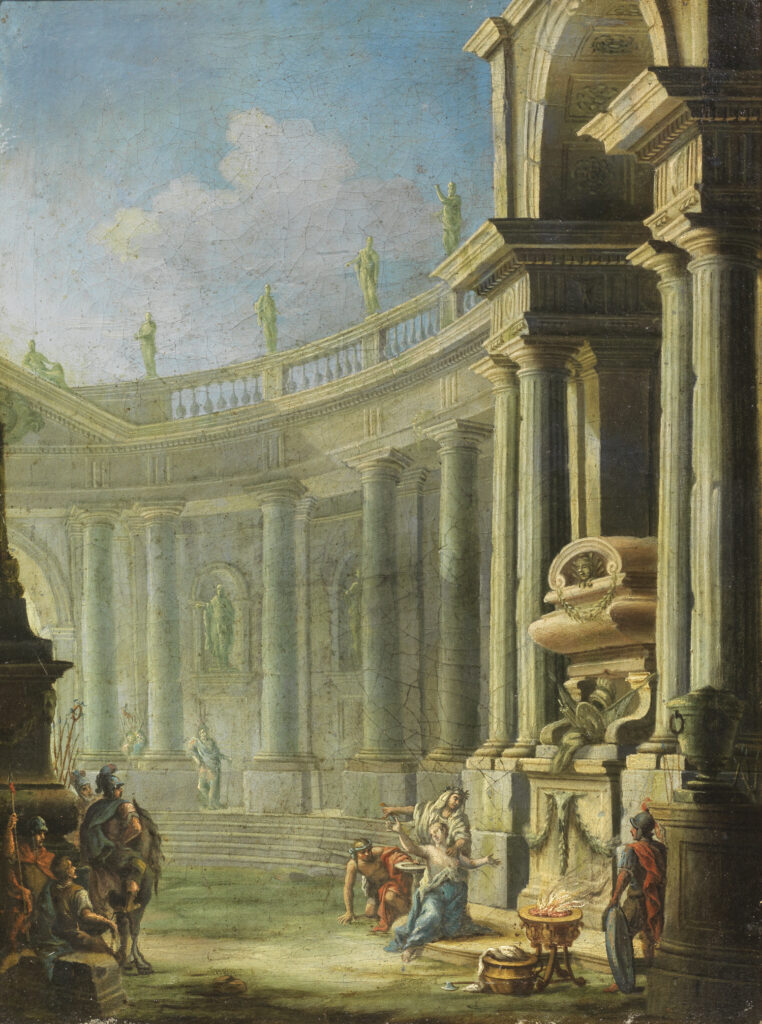ANTONIO JOLI
Modena, 1700 – Naples, 1777
Architectural capriccio with external view
oil on canvas, cm 48,5×36,5
This interesting pair of Architectural Capricci, animated by votive or sacrificial pagan scenes and by interesting elements such as the twisted columns, can be attributed to the formative years of the artist Antonio Joli (Modena, 1700 – Naples, 1777) during his first stay in Rome. We can perceive his pursuit of pure experimentation, but also a realistic extension of previous and contemporary Roman culture, underpinned by widespread theatrical activity.
The first painting consists of the spacious interior of a palace or temple, showing a single wall on the left, surrounded by a portico punctuated by rounded vaults, supported by twisted columns with composite capitals.
The second painting opens onto a vast atrium with a portico of Doric columns and an upper balustrade, already present in other works by the artist. On the other hand, the presence of a large funerary urn in the foreground on the right, balanced by a large group of figures in semi-darkness, is striking.
The pair of paintings emphasises the importance of the young Joli’s Roman experience, during which the painter frequented Panini’s workshop and turned his attention to the works of Viviano Codazzi for his scenographic training.
Contact between Joli and Stefano Orlandi appears decisive in explaining the unusual and inventive use of the twisted columns.


